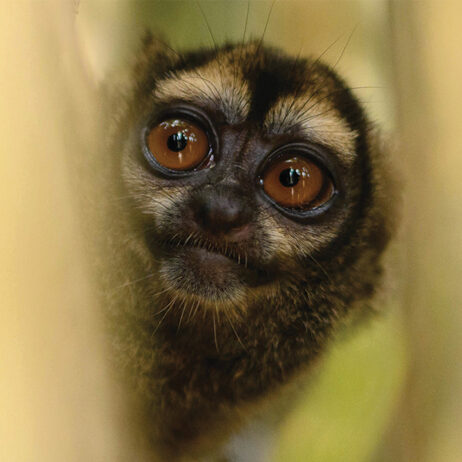
The shy, peaceful Antillean Manatee is an elusive species, spending its days grazing the underwater plants of the Barbacoas Lake's slow-moving waters. Credit: Shutterstock/Vladimir Wrangel
Have you ever wondered what it would be like to meet a manatee? It’s not as easy as you might think. Fundación Biodiversa Colombia (FBC) Board Member and manatee expert Natalia Góngora tells us about her experiences with the Antillean Manatee (Trichechus manatus manatus).
“At the start of my career as a marine biologist, I worked as an intern helping monitor manatees rescued from wildlife trafficking in Magdalena Valley region. During that experience, I came to understand their behaviour and temperament, learned to distinguish their faces and bodies. Little by little, I fell in love with them.
My most memorable encounter with this species was as FBC was just beginning to search for the property that would later become El Silencio Reserve. One afternoon, as the sun was setting, I saw three noses breaking the surface to breathe, leaving bubbles and foam in the water. That was the first time I was certain there were many free manatees!

The calm, serene waters of the Barbacoas Lake and wetlands in Colombia’s Magdalena Valley are one of the few places these shy manatees can be found. Credit: D van der Post
I have never seen so many together in the area again. However, the community says that during the breeding season, more than five individuals may appear together. The last time I saw a manatee ‘snout’ was in August of last year. It was a single individual at dusk, and I was deeply moved. Every time I manage to see them or confirm their presence, I feel a chill and my eyes well up. It is incredible to witness the resilience they possess and the extent to which they can endure.”

Manatees spend most of their time fully submerged and the only chance to see them is when their noses breach the water to take a breath. Credit: Wolfgang Ahlmer (CC-BY)
Here are some fascinating facts about the Endangered Antillean Manatee you may be surprised to learn:
- They have scattered hair all over their bodies, often reddish in colour. This is very unusual for a mammal that spends it whole life under water.
- Manatees have three nails on their flippers that help them forage for seagrass in the underwater meadows where they graze, as well as grip surfaces, helping them navigate through still waters.
- Their nostrils are equipped with valves that close to allow them to hold their breath for up to 20 minutes when they dive and then open when they surface to breathe.
- The female manatee’s reproductive organ is remarkably similar to that of a human, and they only conceive a calf approximately every five years. Once born, the calf will continue to nurse from its mother for two years.
- Early explorers nicknamed manatees ‘sea cows’ after their slow methodical grazing of riverbed vegetation, and the name has remained to this day.

Help us expand El Silencio and save forest, wetlands and wildlife from destruction before it’s too late.

